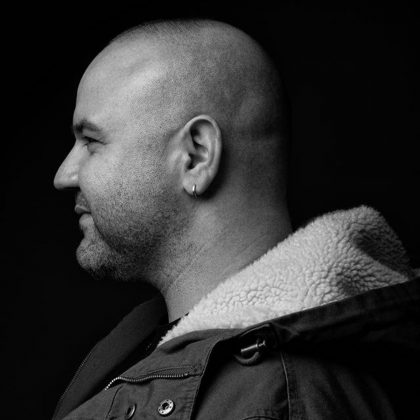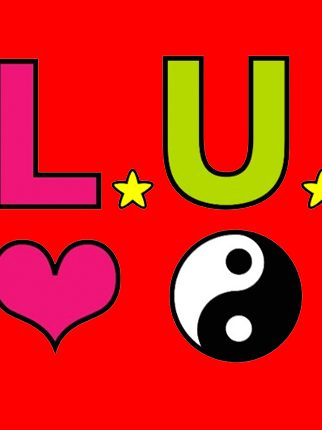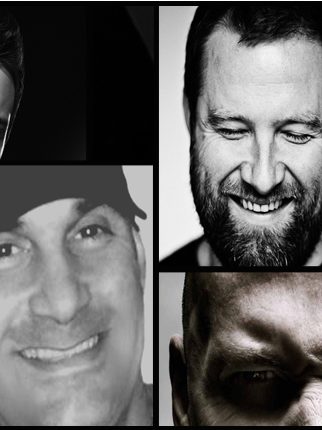Frankie Bones Is Breaking Bones With the Return of ‘Bonesbreaks’
Whether you know it or not, you owe the best nights of your life to Frankie Bones. When he was 23, Bones traveled to England for the first time to play his first “rave” party. Back then, that word meant almost nothing here in the States. What he saw—in the faces of the 25,000 dancers that crowded into an airplane hangar to hear him play—was a movement. When Bones returned to New York, a city then broken amid racial disparity and the crack epidemic, he knew what he had witnessed in the UK would become the catalyst for change at home.

His legendary Storm Raves were the birthplace of the North American rave movement. They provided a safe space for the city’s youth to escape the troubles of their wrecked surroundings, and they provided the inspiration for what would become his enduring legacy: the creation of PLUR.
Bones is a living, breathing historical landmark and musical archivist, and he continues to be a pivotal force within the electronic community to this day. He’s left many legacies since he first brought rave culture to America, including his celebrated Bonesbreaks series, a groundbreaking set of compilations launched in 1988 and debuted at a time when you had to rely on mixtapes to get your techno fix outside the party. After witnessing how far rave culture has come, Bones is re-educating today’s dancefloors and bringing the series back to life with its first installment in 16 years.
Bonesbreaks Volume 17, available now on Bones’ recently launched Bangin Music imprint, is a return to the early days of rave, full of hypnotic rhythms and analog bliss. And with so many new electronic music fans joining the movement, its release serves as a proper education in the roots of American dance music.
We chatted with Frankie Bones about the evolution of PLUR in the past 30 years and the next steps for the worldwide rave movement.
How well do you think the principles of PLUR have held up over the years?
In the very beginning of the scene in the United States, I was looking to create a movement—the Rave Scene, not the club scene, which already existed in the larger cities in America. The club scene was what we were trying to escape, and we pushed the movement as the Peace Love Unity Movement from 1990–93.
This began with the subway car we painted in New York, but that was only realized after experiencing the underground scene of Los Angeles east of Downtown in 1990. That lit the torch, so to speak. We had outlaw parties in New York, but the movement created all-nighters, parties that went past sunrise. We had to install peace, love and unity into every single person who came into our unit.
Since we only knew DJ culture through clubs and hip-hop, we soon realized that when you jack into a lamppost for electricity and the sun comes up, the sensor switches off the light and the power goes off. Hip-hop parties never went into daylight, I suppose. What became of PLUR was for the kids: the candy, the beads, etc. We started it more for safety than anything else, but it was like a family value. The evolution may have grown past its original intention, yet as a family, it still and will always mean looking out for the next person with care. If you see something wrong, say something—loud.
A lot of the same social turmoil that brought the rave scene about in the late ‘80s seems to be repeating itself these days. Do you think that need for escapism has anything to do with the current explosion of electronic music?
As one of the only American DJs to witness and play the Summer of Love in the UK in 1989, I saw something that didn’t seem logical in the United States. But the youth culture in the UK took American underground music—house and techno—and created this huge movement around that. I knew we were onto something [and were] creating a movement in New York City, but I never thought about EDM. If anything, it was UDM: underground dance music. Nothing wrong with EDM, but it also is EveryDay Music— music coming out of a speaker in a gas station as you pump gas; I heard a Skrillex track like this. It’s nice when teenagers get into their 20s, because as they get into this culture [for more than five years], they want the underground—because EDM is what everyone does. To find a signature, you have to dig deeper; that is what it is all about, to me.
Your first gig in the UK was in front of 25,000 people. Did you ever imagine that electronic music events would be pulling over 100,000 attendees 30 years later?
The first time I played to 25,000 people, it was only one stage, and it was only supposed to be 5,000 people. I knew that if they booked me three months earlier and expected 5,000 people, I somehow just played to five times the amount, so to answer that question: yes. I did believe a Woodstock-size event could happen in the United States, and when I played for 12,500 for Insomniac on New Year’s in 1999/2000, I absolutely believed they would be the ones to do it. That being said, when I went to EDC in Los Angeles in 2009 and saw 90,000 people, I had to stop and take it all in. I realized what 20 years of American rave had become. It was awesome, by the way.
You and your brother, Adam X, used to make top 100 lists every year. Any thoughts on reviving that concept?
The concept of making top 100 lists was something I did from 1982–84 on my own; I was 16 years old when I started it. The concept was created from an older DJ friend of mine, Tony Torres. Back in 1982, there were record pools. Imagine Beatport like this. It’s a place called For the Record in Manhattan. Tony was like 21, and he had this beat-up, old Delta ‘88, and before GPS, I was the navigator. I’d get him into Manhattan, wait in the car, double-parked, and he’d return with 40–50 promo white labels from the pool every single week for the next three years. I’d put the titles on index cards, and maybe 10 out of 50 made the list. Then, around Christmas night, I’d go over to his crib; we would figure out what went where, and it was really genuine.
Billboard did similar lists, but a lot of the industry was fueled by payola. Our top 100 wasn’t anything more than 52 record pickups a year and knowing what the best of them were. I wouldn’t even know where to begin by doing that today. But now that I shared that, I’ve been living the same dream since, so my selections have always been top-notch. The rave, repeat thing—sometimes I sleep, sometimes I eat.
You may have more perspective than anybody else in the scene today. Based on that, where do you see things going in 5–10 years?
Here is the good news: We have arrived in the Golden Age. It’s reached its apex. If you were at EDC 20 in [Las Vegas this year], you witnessed it as a whole entire package. Could it get any bigger? It could, yet I don’t think it could get any better. It was perfect as a whole package. And yes, of course, I want to play a stage with 80,000 people—who doesn’t—but just to be a part of one ridiculously large family as a whole unit. It was history being made once again. I posted my EDC 2016 set on SoundCloud.
I can claim UDM is mine, and nobody does it better. The underground, it’s a great place to be. And we will still be here in 5–10 years, doing just that.
Bonesbreaks Volume 17 from Frankie Bones is available now on Bangin Music.
Alexander Dias is a breaks fiend. Follow him on Twitter.
Follow Frankie Bones on Facebook | Twitter






